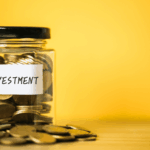CapitaLand Investment, a Singapore-based real estate investment manager, has unveiled its latest tool, the “Return on Sustainability” (RoS) framework, designed to measure the financial implications of environmental investments. Transitioning from pledges to tangible outcomes is expected in current times, making frameworks like RoS imperative. Both companies and investors require reliable methods to evaluate the feasibility and profitability of sustainability investments amid rising environmental awareness.
Initially, CapitaLand Investment made strides in eco-friendly projects, focusing on sustainable construction and energy-efficient designs. Past initiatives highlighted renewable energy and resource efficiency without explicitly linking these to financial gains. With the RoS framework, CapitaLand enhances this approach by offering detailed financial assessments. As environmental policies tighten and carbon pricing becomes more prevalent, such frameworks are increasingly vital for real estate managers globally.
How does the RoS framework work?
By analyzing components such as green capex and utility savings, CapitaLand’s RoS framework aims to provide a structured means of estimating financial returns from sustainability initiatives. This system evaluates financial metrics like rent premiums and asset valuations to guide decisions on redevelopments and new projects. As investors seek sustainable projects, the RoS framework offers insights into potential returns on green investments, contributing to informed decision-making.
What potential risks can green capex address?
Green capital expenditures might safeguard assets against rising risks like carbon taxes and increased insurance costs. The RoS model underscores the importance of embedding sustainability in financial planning, which can potentially enhance an asset’s internal rate of return (IRR). A breakeven analysis across portfolios further demonstrates the feasibility of green projects, aligning financial strategies with sustainability goals.
The introduction of RoS complements CapitaLand’s prior efforts, including its internal shadow carbon pricing adopted in 2021. This pricing aids in evaluating the risks and opportunities related to climate changes. Decisions surrounding capital deployment now consider comprehensive financial and environmental data, promoting lower-carbon projects. Results from CapitaLand’s sustainability report show rises in renewable energy use and a significant increase in green leases, indicating improvement in existing sustainability efforts as well.
Furthermore, the organization has made impactful strides in promoting gender equality in leadership, reporting 30% female representation on the board and 37% in senior management. Although a secondary focus of the report, this achievement highlights the company’s commitment to inclusive sustainability.
Integrating innovation, CapitaLand intends to refine the framework further while exploring new methodologies to evaluate climate-related risks. The company’s ongoing adjustments signal a difference in developing advanced tools focusing on both economic and environmental outcomes. As they continue using RoS, CapitaLand aims to bolster their sustainability initiatives.
RoS evaluation slated to increase profitability through eco-friendly investments, reflects a rising trend in resource-efficient approaches. For CapitaLand, quantifying environmental and financial aspects provides a deeper understanding of green investments, critical factors as global sustainability standards tighten. An adaptable framework assists evaluating risks and strengths in transitioning toward sustainability. Organizations adopting similar practices can potentially achieve both environmental goals and economic benefits.









